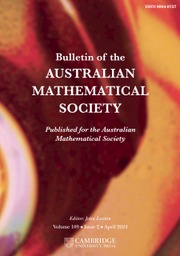Crossref Citations
This article has been cited by the following publications. This list is generated based on data provided by Crossref.
DE MARI, FAUSTO
2022.
ON GROUPS WHOSE SUBGROUPS ARE EITHER MODULAR OR CONTRANORMAL.
Bulletin of the Australian Mathematical Society,
Vol. 105,
Issue. 2,
p.
286.

